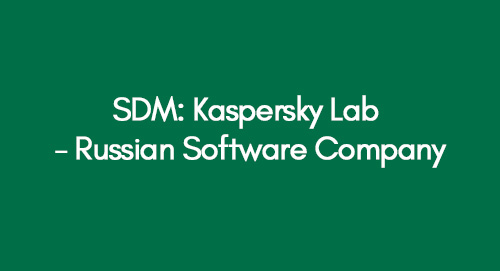
Augmented Reality (AR) In Museums
January 14, 2021
How Effective are Loyalty Program in Building Customer Loyalty within Grocery Retailing Setting
January 14, 2021Executive Summary
This report was intended towards assessing the strategies of Kaspersky for building an effective CSR strategy with a road map for 10 years for its sustainable development. Kaspersky is a Russian cyber security company which enables the customers to protect their devices from the malicious software and other cyber threats in order to ensure smooth operations for the buyers. The company has expanded its operations in different markets in order to increase their customer base and have built a strong brand reputation all over the world. According to the current trends in the software industry, it has been observed that over the past few years, the Russian software market exports have increased to double digits and reaching about $7 billion. Consequently, the demand for IT companies products has also doubled on the domestic level. The report provides an in-depth analysis on the strategy opted by the company for the expansion and successful operations focused towards the CSR strategy.
Table of Contents
2.2 External environment analysis. 8
2.2.2. Porter’s Five Forces. 9
2.2.3. Stakeholder Analysis. 9
Scenario 1: A high-tech Future. 11
Scenario 2: Vendors in the Software Industry of UK moving to upward markets. 12
Scenario 3: Increase in use of cloud software (SaaS) 12
Scenario 4: Physical-Digital Integration. 13
5.1 The Company Resources, Competences and Capabilities. 15
5.2. Strength for Internationalisation. 17
- Overview of the UK cyber security Market 17
- Critical success factors and KPIs for expansion in the UK market 20
7.1 Critical success factors. 20
7.3. Stakeholder’s Satisfaction for the CSR strategy. 22
7.4. Roadmap for Effective CSR for 10 years. 23
1. Kaspersky Company Profile
The computer software industry is the hub of an evolutionary change following up with the new trends in mobile computing and the consumerisation of IT which has triggered permanent shifts in the industrial structures. Such trends are forcing the software organisation to change their strategies for the way they develop their products in order to meet the demands of the customers (Kaspersky.com. 2017).
Kaspersky Lab is a multinational anti-virus and cyber security provider headquartered in Russia and also operated by a holding organisation in the UK. The products and services provided by Kaspersky involved internet security, endpoint security, cyber security product, password management and antivirus products and services (Usa.kaspersky.com. 2017). The company has expanded their operations into different international markets from 2005-2010 and grew with an estimated amount of $700 million according to the annual revenues as reported in the year 2014. However, in the year 2016, the company has about 400 million users because of which it acquired the largest market share in Europe at the cyber security software vendors.
1.1 Mission
The mission of Kaspersky is quite simple, yet ruthless as it is focused towards providing services to small, mid-sized and large-scale companies for mitigating the risk associated with cyber-security and also providing highly responsive, efficient and effective protection to their customers against cyber threats, spams and malware (Kaspersky.com. 2017). This explains that the company is committed to protecting the computer users all over the world.
1.2. Vision
The global vision of the company is focused towards the expansion of the business into international markets. Moreover, the strategy of the company is also reflected in their vision statement that the business is supposed to be transformed into the global corporation (Usa.kaspersky.com. 2017). The company also wanted to ensure that it provides an effective control for the international operations and acquire a leading market share in the industry.
1.3. Corporate Goals
The corporate goals of the Kaspersky are focused towards investing in the best education and research, specialists and developments towards solutions which offers world-beating protection to the customers (Usa.kaspersky.com. 2017).. For fulfilling the vision of the company, it has employed a unique team of malware researchers all over the globe which includes 40 internationally recognised experts.
1.4. Growth Objectives
The company is a leading developer having growth objectives inclined towards expanding its operations in the international markets with the provision of endpoint security products. The company also seeks to acquire the largest market share in the software industry (Usa.kaspersky.com. 2017). Kaspersky is also expected to grow annually at the growth rate of 24.6% which is above the average rate as observed according to other vendors in the software industry. The current expansion of Kaspersky is explained in the figure below,
Figure 1: Geographic expansion of Kaspersky
Source: Kaspersky.com. (2017)
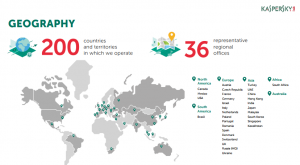
Figure 1: Geographic expansion of Kaspersky
2.1 Schematics
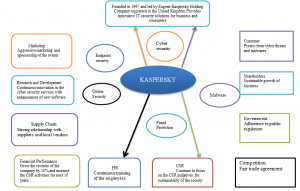

External environment analysis
2.2.1. PESTE Analysis
Following is the PESTE analysis conducted for Kaspersky in the UK software market,
Category | Trend | Impact |
Political/Legal | -Growing political focus on the cyber security and malware practices. | More pressure on the pricing of the Kaspersky products. |
-Harmonisation of internet threats across Europe | Increase in the number of customers. | |
-Political stability in major cities of the UK. | Positive impact on the growth opportunities for Kaspersky | |
-Increase in the government support for the automation. | Favourable condition for the international expansion of the business. | |
Economic | -Growing disposable income of the consumers | Consumer will be willing to spend more on the purchase of software. |
- Brexit and UK referendum | Negative impact on the growth opportunities of Kaspersky. | |
-Global economic crisis | Minimal chances for the global expansion of business. | |
Social | -Customers increasing focus towards data security and protection. | It will create positive impact for Kaspersky and increase their customer base. |
-Lower cost and more customisation are required by the customers. | It will help the company in focusing on providing more options to the customers in terms of customisation for meeting their demands | |
Technological | -Rapid advancement in the technology related to software development | Provide digital opportunities to Kaspersky. |
-Technological breakthroughs | More responsive software development for the customers. | |
Environmental | Changes in the environmental agenda and the awareness of the community | It is necessary for Kaspersky to identify eco opportunities to make the business competitive. |
2.2.2. Porter’s Five Forces
The figure presented below represents the porter’s five forces for Kaspersky in the UK market. It can be observed that there is a fierce competition in the software industry of the UK such as McAfee, Norton and e-Set which has entered the market aiming towards gaining market share and reaching the scope of software market.
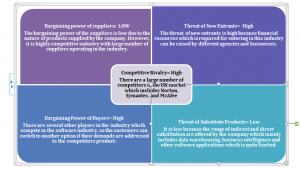
2.2.3. Stakeholder Analysis
In the light of Shakhshir (2014), the stakeholder’s analysis is the process of gathering and analysing the information which is used to determine the interest of the stakeholders towards a particular organisation’s services and products. In case of Kaspersky Lab, the figure below explains the power-interest matrix of the existing stakeholders of the company.
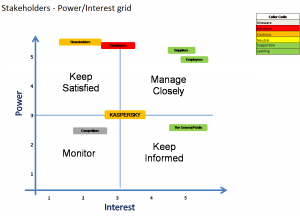
Figure 2: Power-Grid Matrix of Kaspersky
Source: Author
3. Competitor’s Analysis
Kaspersky is perhaps the most competitive and largest endpoint protection software in the software industry. However, from the competitive perspective, the company faces direct competition with Symantec, Norton and McAfee as vendors who are offering products that encompasses same functionality which Kaspersky integrates into their products. Following is the competitor analysis of the company in terms of profits, revenues, products and services and employees. According to the table it can be observed that Symantec has a strong position in the market with high revenues and profits.
Factors of Comparison | Kaspersky | Symantec | McAfee |
Profit | US $ 529 million (2015) | US$2.488 billion (2016) | US$ 515 million (2016) |
Revenue | US $619 million (2015) | US $3.6 billion (2016) | US$1.68 billion (2016) |
Employees | 3500 (2016) | 11,000 (2016) | 6,768 (as of 2017) |
Products and Services | Security Software | Security software | Security Software |
4. Scenario Analysis and Strategic Options
There are four different scenarios explained in the table with description against each scenario, the impact of each scenario on Kaspersky and the strategic options which are consisting of company’s reaction to the scenario. 
Scenario 1: A high-tech Future
Scenario: The high-tech future can be viewed as the gateway to world in which Kaspersky can get highest demands for their software due to increase in the cybercrimes and malware practices. Since most of the companies will be transforming its strategy by big data applications, therefore, it will require protecting that data for the company. Hence, that protection will be facilitated by the security software.
Effect on Kaspersky: Kaspersky will experience a growth opportunity due to the shift of business from traditional modes to digitisation and rectifying the cyber security issues.
How might Kaspersky react?
Scenario 2: Vendors in the Software Industry of UK moving to upward markets
Scenario: The software vendors that provide services to the small organisations will move towards tier 1 and 2 enterprise markets where the revenue of the company is above $250 million and the users are more than 1000 in number.
Effect on Kaspersky: Kaspersky can face decrease in the sales as it will be facing direct competition from the new competitors.
How might Kaspersky react?
- Kaspersky has to improve their scalability and functionality for competing with the new entrants in the market.
- 2. The company should also focus on improving the technology in the software and allow web portal access to their suppliers and customers for resolving the issues.
Scenario 3: Increase in use of cloud software (SaaS)
Scenario: In the third scenario, it can be possible that the customers begin to look for cloud-based software solutions which is also gaining market acceptance. In this case, the software vendors host the application of software ad enable the access to the customers from internet.
Effect on Kaspersky: It is providing growth opportunity to Kaspersky by market development
How might Kaspersky react?
- Focus on introducing different cloud-based software such as ERP, CRM or Project management.
- Kaspersky should tap into those markets which are underserved or carry out related diversification in the software industry through merger and acquisition.
Scenario 4: Physical-Digital Integration
Scenario: In the fourth scenario, mobile devices are gradually adding the technology element into the daily lives. The customers purchases online via smartphone and also through the physical store. The online purchase of the customers through smartphones should be taken into consideration by Kaspersky.
Effect on Kaspersky: The demand of the antivirus software will remain medium to high because of different companies providing the same services to the customer.
How might Kaspersky react?
- The company can strengthen its market position by providing the software at low cost for becoming market leader in the software industry.
- Kaspersky should carry out related diversification by providing antivirus software to the smartphone which will not take an ample space in the customer’s smartphone.
Using the Ansoff Matrix Peppard and Ward (2016), the strategic position and strategy of the company is explained as,
Figure 3: Ansoff Matrix for Kaspersky
Source: Author
5. Building an effective CSR strategy in the UK Market
The current strategy of Kaspersky focused towards CSR has helped the company in sustaining their competitive advantage by showing commitment towards making a safer cyberspace for protecting people. In addition, the company supports science, sports and arts by officially sponsoring Scuderia Ferrari Formula One racing team where both are committed towards the leadership of technology. Moreover, the company is also inclined towards providing educational initiatives to the people in order to fight against cybercrime. However, if the company wishes to further build its CSR strategy, following analysis should be conducted to achieve the strategic objectives and focus on few KPIs for the achievement for next 10 years.
5.1 The Company Resources, Competences and Capabilities
Since Kaspersky can sustain its competitive advantage by effective utilisation of their internal capabilities, competences and resources, VRIN framework will help in better understanding the scenario. However, before understanding the competitive advantage through VRIN framework, it is necessary to understand the resources and competences of Kaspersky for its expansion into UK market.
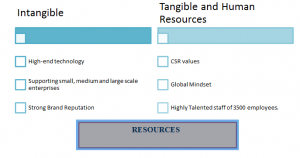
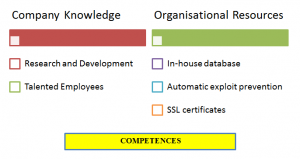
|
Resources |
Value |
Rarity |
Imitability |
Organisation |
Competitive Advantage |
|
High-end technology |
Yes |
No |
No |
Yes |
Sustainable Competitive Advantage |
|
Strong Brand Reputation |
Yes |
Yes |
No |
Yes |
Sustainable Competitive Advantage |
|
Support to small, mid and large enterprise |
Yes |
No |
No |
Yes |
Temporary Competitive Advantage |
|
CSR Values |
Yes |
Yes |
No |
Yes |
Temporary Competitive Advantage |
|
Global Outreach Mindset |
Yes |
Yes |
Yes |
Yes |
Temporary Competitive Advantage |
|
Talented Staff |
Yes |
No |
Yes |
Yes |
Sustainable Competitive Advantage |
5.2. Strength for Internationalisation
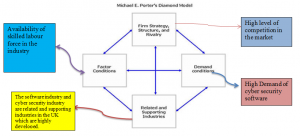
Figure 4: Kaspersky Porter Diamond Model
Source: Author (Adopted by: Freeman, 2010)
6. Overview of the UK cyber security Market
The cyber security sector of the UK has grown significantly with increase in the exports to the international markets (Gov.uk. 2017). In the UK, the total size of the cyber security sector is estimated at 3489 million in the year 2017. However, the estimated market size of the cyber security public sector is at 1137 million British pounds.
Figure 5: Market Size of Cyber security in UK
Source: Statista (2017).
In the UK, the cyber security is based on four distinct buyers, yet with different behaviours and buying points which includes defence and intelligence, local government, large enterprises, consumers and SME’s. It is significant for the cyber security companies to offer the products and services according to the market needs.
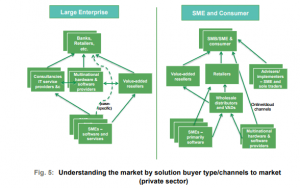
Figure 6: Target Groups for Cyber security
Source: Buckup (2012).
Currently, UK has been ranked as the highly safe place for carrying out online business because of cyber security excellence (Harrop and Matteson, 2015). The graph below presents the shares spend by UK on the IT security provided to different buyer groups.
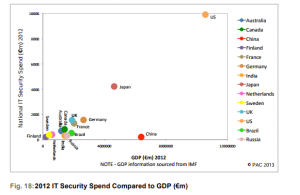
Figure 7: IT Security Expenditure by different countries
Source: Buckup (2012)
7. Critical success factors and KPIs for expansion in the UK market
7.1 Critical success factors
In order to understand the critical success factor, it is necessary to understand the probable strategy which is to be applied by Kaspersky for the expansion into the UK market. For this purpose, Bowmen strategy clock Hitt, Ireland and Hoskisson (2012) has been applied for understanding the strategy of the company for building an effective CSR strategy with the expansion in the UK.
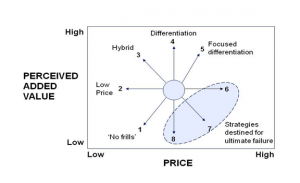
Figure 8: Bowman Strategy Clock
Source: Peppard and Ward (2016)
The critical success factor for the expansion in the UK market can be as,
- Highly efficient customer services which can attract different buyers groups in the UK.
- Aggressive personal marketing on different events and seminars.
- Offering competitive cost to the customers for taking up the competitor’s share in the cyber security and software industry of the UK.
7.2 Main KPIs
Following are the main KPIs of Kaspersky Lab which should be taken into account for building a successful CSR strategy,
- Focus on green initiatives
- Global outreach
- Betterment of the society
- Protection of people from cyber threats
- Create awareness about cyber security.
7.3. Stakeholder’s Satisfaction for the CSR strategy
|
Stakeholder Group |
Expectations |
|
Shareholders |
Sustainable growth of the company, dividends and ROI. Adopt appropriate measures of CSR. |
|
Employees |
Attractive incentives, financial and non-financial rewards |
|
Customers |
Best software for cyber security against hackers and malware practices. |
|
Suppliers |
Trade agreements and high turnover |
|
Government |
Adherence to legislation regarding cyber security and other regulatory frameworks and Payment of taxes on time. |
|
Competitors |
Fair competition with the direct and indirect competitors operating in the software industry of the UK. |
|
The General Public |
Protection from hackers and other malwares as a business as well as focus on CSR strategic objectives. |
7.4. Roadmap for Effective CSR for 10 years
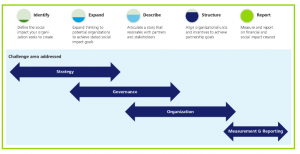
Figure 9: CSR strategy roadmap followed for next 10 years
References
Buckup, S. (2012). Building Successful Partnerships. The Annual Review of Social Partnerships, 2012(7), pp.11-11.
David, F.R., 2011. Strategic management: Concepts and cases. Peaeson/Prentice Hall.
Freeman, R.E., 2010. Strategic management: A stakeholder approach. Cambridge university press.
Gov.uk. (2017). Britain’s cyber security bolstered by world-class strategy - GOV.UK. [online] Available at: https://www.gov.uk/government/news/britains-cyber-security-bolstered-by-world-class-strategy [Accessed 30 Jun. 2017].
Harrop, W. and Matteson, A., 2015. Cyber resilience: A review of critical national infrastructure and cyber-security protection measures applied in the UK and USA. In Current and Emerging Trends in Cyber Operations (pp. 149-166). Palgrave Macmillan UK.
Hitt, M.A., Ireland, R.D. and Hoskisson, R.E., 2012. Strategic management cases: competitiveness and globalization. Cengage Learning.
Jurevicius, O., 2013. PEST & PESTEL Analysis. Strategic Management Insight, 13, p.2013.
Kaspersky.com. (2017). Kaspersky Home. [online] Available at: https://www.kaspersky.com/ [Accessed 30 Jun. 2017].
Peppard, J. and Ward, J., 2016. The strategic management of information systems: Building a digital strategy. John Wiley & Sons.
Shakhshir, G., 2014. Positioning strategies development. The Annals Of The University Of Oradea, 977, pp.416-437.
Statista. (2017). UK cyber security market size: Public sector 2010-2017 | Forecast. [online] Available at: https://www.statista.com/statistics/289161/uk-cyber-security-total-public-sector-size/ [Accessed 30 Jun. 2017].
Usa.kaspersky.com. (2017). [online] Available at: https://usa.kaspersky.com/about/press-releases/2010_kaspersky-lab-continues-its-global-market-growth [Accessed 30 Jun. 2017].
Appendices
CSR initiatives of Kaspersky

Major Discoveries
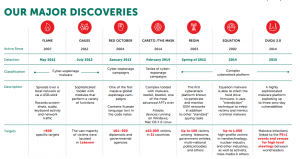
Get 3+ Free Dissertation Topics within 24 hours?

















